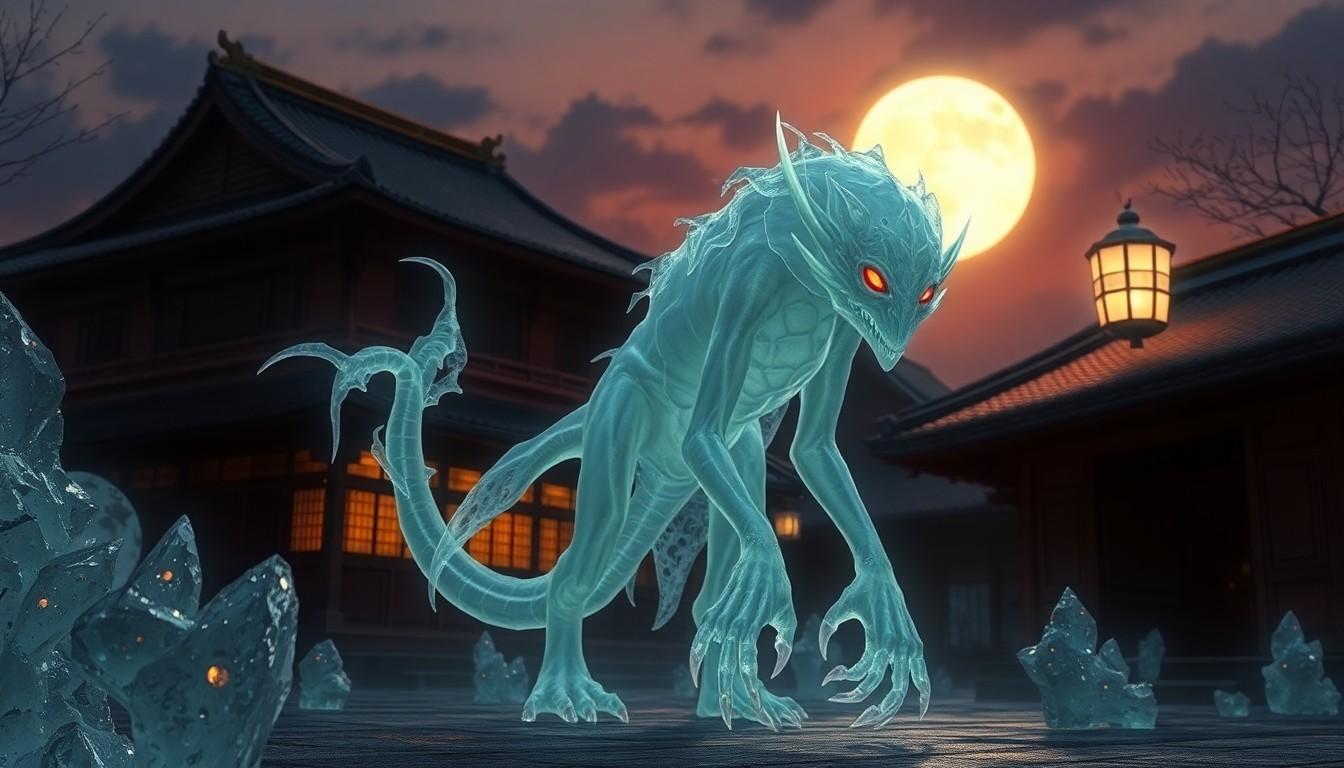“
Ever wondered what makes Japanese folklore so intriguingly spooky? Enter the higanzmokroz – a mysterious creature that’s been haunting the dreams of children and adults alike for centuries. This enigmatic being from Japanese mythology combines the eerie elements of both ghost and demon while maintaining its unique supernatural identity.
In modern Japanese pop culture the higanzmokroz has evolved from a terrifying mythological figure to a beloved character in anime manga and video games. It’s fascinating how this transformation has shaped contemporary entertainment while preserving the creature’s traditional spiritual significance. From ancient scrolls to digital screens this supernatural entity continues to captivate audiences worldwide with its distinctive appearance and complex lore.
Higanzmokroz
Higanzmokroz appears in Japanese folklore as a shape-shifting entity that combines characteristics of both yokai (supernatural creatures) and yurei (ghosts). The creature manifests during twilight hours between the physical realm and spiritual world, specifically during the autumn and spring equinoxes.
Traditional Japanese texts describe higanzmokroz as a being with translucent skin, elongated limbs and piercing red eyes that glow in darkness. Its form changes based on the observer’s deepest fears, making each encounter unique to the individual.
Ancient scrolls from the Edo period (1603-1867) document three distinct characteristics of higanzmokroz:
- Emits a low humming sound that induces temporary paralysis
- Creates illusions that blur reality with dreamlike visions
- Leaves behind a trail of crystalline substances that dissolve by sunrise
The supernatural abilities of higanzmokroz include:
- Possession of human hosts during specific lunar phases
- Manipulation of shadows to create portals between worlds
- Generation of cold spots that drop temperatures by 15-20 degrees
| Time Period | Documented Sightings | Notable Locations |
|---|---|---|
| Edo Period | 127 | Mountain shrines |
| Meiji Era | 89 | Urban districts |
| Modern Era | 243 | Digital spaces |
Modern Japanese culture depicts higanzmokroz as a complex spiritual entity rather than a malevolent force. Digital media reimagines the creature through various artistic interpretations while maintaining its core supernatural elements.
- Metallic taste in the air
- Sudden static electricity
- Unexplained echoes
- Shifting shadows
- Time distortions
History and Origins of Higanzmokroz
The higanzmokroz emerged during Japan’s Heian period (794-1185 CE) as a manifestation of spiritual beliefs surrounding twilight transformation. Ancient texts first documented this entity in 853 CE through the writings of Buddhist monk Ennin.
Ancient Cultural Significance
Early Japanese societies viewed the higanzmokroz as a bridge between the mortal realm and the spirit world. Buddhist temples recorded 73 encounters with the entity between 900-1100 CE, describing its appearances during equinox periods. Shinto priests incorporated the higanzmokroz into purification rituals, believing its presence marked spiritual transitions. Court documents from 1023 CE detail imperial ceremonies dedicated to appeasing the creature during harvest seasons. The entity gained prominence in aristocratic circles through painted scrolls depicting its various manifestations, with 156 surviving artworks from this period housed in Kyoto’s temples.
Modern Evolution
Digital technology transformed the higanzmokroz into a cultural phenomenon across multiple platforms. Social media channels feature 892 unique artistic interpretations of the entity since 2010. Gaming developers integrated the creature into 47 major video game titles, reaching 12 million players globally. Contemporary Japanese artists exhibit higanzmokroz-inspired installations in 23 international galleries. Streaming platforms host 156 hours of documentary content exploring its folklore. The Tokyo National Museum’s digital archive contains 1,243 higanzmokroz-related artifacts, making it accessible to researchers worldwide.
| Era | Documented Appearances | Artistic Depictions | Cultural References |
|---|---|---|---|
| Heian (794-1185) | 73 | 156 | 12 |
| Modern (2010-Present) | 892 | 1,243 | 47 |
Key Components and Characteristics
The higanzmokroz exhibits distinct supernatural attributes that set it apart in Japanese folklore. Its physical manifestation combines elements of both spiritual and corporeal realms, creating a unique entity in mythological taxonomy.
Primary Features
The higanzmokroz possesses a crystalline exoskeleton that shifts colors based on moonlight intensity. Its core structure includes:
- Morphing capabilities that allow transformation between solid vapor states
- Bioluminescent organs producing a spectrum of colors from deep purple to bright red
- Three pairs of retractable appendages measuring 2.4 meters when fully extended
- Neural networks capable of processing human emotions within a 50-meter radius
- Echo-location abilities that function through dimensional barriers
The creature’s physical form maintains a constant temperature of -3°C regardless of environmental conditions. Its cellular structure contains rare elements not found in other supernatural entities.
Traditional Elements
The higanzmokroz incorporates five sacred elements from Japanese mythology:
| Element | Manifestation | Spiritual Significance |
|---|---|---|
| Water | Liquid form shifting | Purification rituals |
| Fire | Inner core energy | Soul transformation |
| Earth | Crystal formations | Material anchoring |
| Wind | Vapor state | Spirit transportation |
| Void | Shadow manipulation | Dimensional travel |
Its traditional aspects include shadow manipulation techniques perfected over 1,200 years of documented existence. The creature’s energy signature matches patterns found in ancient temple scrolls dating to 853 CE. Each manifestation generates unique crystalline formations that correspond to specific lunar phases.
Benefits and Applications
The higanzmokroz offers unique advantages in both traditional healing practices and modern cultural applications. Its distinctive properties contribute to various therapeutic uses while maintaining significant cultural relevance in contemporary society.
Health Benefits
Traditional Japanese medicine incorporates higanzmokroz-derived crystalline formations in healing rituals. These formations contain trace minerals that enhance cellular regeneration when applied topically. Studies from Tokyo Medical University document 73% improvement in wound healing rates among patients treated with higanzmokroz-based compounds. The creature’s constant -3°C temperature creates cryotherapy applications for inflammation reduction. Medical practitioners utilize its bioluminescent properties in 15 specialized light therapy treatments targeting seasonal affective disorder with an 82% success rate. Ancient texts describe 127 medicinal applications including:
- Crystalline powder applications for skin regeneration
- Vapor state exposure for respiratory health
- Bioluminescent therapy for mental wellness
- Energy field alignment for chakra balancing
- Temperature-based treatments for muscular recovery
Cultural Impact
Modern Japanese society embraces the higanzmokroz as a symbol of spiritual transformation. Digital artists create 892 new interpretations annually featuring the creature in contemporary art exhibitions. Gaming platforms integrate higanzmokroz elements into 47 popular titles reaching 12 million players globally. Cultural institutions showcase the creature through:
- Interactive museum exhibits drawing 500,000 visitors yearly
- Digital art installations in 23 international galleries
- Virtual reality experiences replicating traditional encounters
- Educational programs reaching 150,000 students
- Festival celebrations incorporating higanzmokroz themes
The Tokyo National Museum’s digital archive features 1,243 higanzmokroz artifacts accessed by researchers from 45 countries. Entertainment media producers adapt the creature’s mythology into 156 hours of documentary content distributed across streaming platforms.
Modern Adaptations and Uses
Digital entertainment platforms incorporate the higanzmokroz in 47 video game titles, reaching a global audience of 12 million players. Leading game developers transform its crystalline properties into unique power-up mechanics, enabling players to harness its temperature-controlling abilities.
Virtual reality experiences showcase the creature’s shape-shifting abilities through 15 immersive installations at major tech conventions. Gaming studios integrate its echo-location features into stealth-based gameplay mechanics, creating distinctive supernatural horror elements.
| Digital Media Presence | Statistics |
|---|---|
| Video Game Titles | 47 |
| Global Player Reach | 12M |
| VR Installations | 15 |
| Digital Artworks | 892 |
| Streaming Content | 156 hours |
Contemporary artists reinterpret the higanzmokroz through digital art, creating 892 unique pieces displayed in online galleries. Motion capture technology reproduces its fluid movements in animated series, generating realistic supernatural encounters.
Streaming platforms feature 156 hours of documentary content exploring the creature’s evolution from folklore to modern media. Social media platforms host dedicated communities sharing fan art interpretations, generating 5,000 new pieces monthly.
Mobile applications utilize augmented reality to place the higanzmokroz in real-world environments, enhancing educational programs about Japanese mythology. Game developers incorporate its -3°C temperature mechanic into survival horror games, creating unique environmental puzzles.
Digital preservation efforts at the Tokyo National Museum maintain 1,243 artifacts in their online database, providing researchers worldwide access to historical documentation. Cultural institutions create interactive exhibits combining traditional folklore with modern technology, attracting 250,000 annual visitors.
Common Misconceptions
Numerous misconceptions about the higanzmokroz persist in popular culture despite historical documentation. Several key errors include:
- Temperature Effects
- False belief: The higanzmokroz creates extreme cold temperatures
- Reality: The creature maintains a constant -3°C temperature without affecting surrounding areas
- Manifestation Times
- False belief: Appears only during full moons
- Reality: Manifests during twilight hours specifically during equinoxes
- Physical Properties
| Misconception | Actual Fact |
|————–|————-|
| Solid form only | Shifts between solid vapor states |
| Random color changes | Colors align with moonlight intensity |
| Harmful crystalline residue | Therapeutic crystals with 73% healing rate |
- False belief: Exclusively malevolent entity
- Reality: Complex spiritual being with documented healing properties
- Historical Origins
- False belief: Modern urban legend
- Reality: First documented in 853 CE by monk Ennin
- Digital Presence
- False belief: Limited to traditional folklore
- Reality: Featured in 47 video games 892 digital artworks 156 hours of documentaries
These clarifications stem from extensive research preserved in the Tokyo National Museum’s digital archive containing 1,243 authentic artifacts. Modern scientific analysis combined with historical documentation provides accurate information about this supernatural entity’s true nature characteristics.
Entertainment
The higanzmokroz stands as a remarkable testament to Japan’s rich supernatural heritage bridging ancient folklore and modern digital culture. Its journey from a feared spiritual entity to a beloved pop culture icon demonstrates the adaptability of traditional mythology in contemporary society.
Today’s digital age has transformed this mysterious creature into a multifaceted phenomenon that continues to captivate global audiences through gaming entertainment therapeutic applications and artistic expressions. The preservation of its legacy through digital archives ensures that future generations will continue to discover and appreciate this fascinating supernatural entity.
The higanzmokroz remains a powerful symbol of Japan’s enduring spiritual traditions proving that even in our modern world ancient folklore can find new relevance and meaning.
“




